Can someone please tell me what may be the purpose of the jumpers in the attached image? Why not use a PCB trace instead?
 Figure 1 The PCB is a part of an old Videocassette recorder (VCR)
Figure 1 The PCB is a part of an old Videocassette recorder (VCR)
It is a super-cheap single-sided paper-based phenolic PCB (probably punched rather than drilled holes, judging by how large they are).
It's to save money compared to a fancy double-sided PCB with drilled plated-through holes.
The cost savings will easily pay for the salary of the engineers, and if you don't do it, they will save the cost of your salary by shunting you out onto the mean streets of Tokyo or Taipei and find someone who will.
Another issue from that time is that it's easier to get consistent quality of production with single-sided PCBs. The chemical process of making plated-through holes is sensitive to contamination and easy to get wrong. It only seems straightforward now that many low-cost fabs have mastered the process control. In the 1990s it was not uncommon to see bad (intermittently bad on 100%-tested!) plated-through holes and hair shorts.
The PCB is a single sided board. A double sided board (with traces on the top and bottom) costs more to make.
Back when that board was new, a doubled sided PCB cost so much more than a single sided board that it was cheaper to make a single sided board and install a bunch of jumpers to make connections that would have otherwise required a double sided board.
Today, double sided PCBs are cheap enough that it is rare to find a single sided board with jumpers. It still happens, but mostly for really cheap junk.
As others have noted, the aim is ultra low cost of production.
It uses a low cost single sided "phenolic" PCB.
By using links it only needs copper on one side, and there is no need for via connections between the layers - thereby eliminating the relatively expensive and time consuming plating processes.
The links are inserted by a machine that moves so fast it is a blur to the eye. I don't know the precise insertion rate, but it's tens of links per second and sounds somewhat like an automatic weapon.
Here is a You Tube video of one in action - Jumper wire insertion - not quite as fast as I recall but still impressive. Rate varies but sounds like maybe in the 10-20 links per second range on faster runs.
Links are made from a wire roll on the fly - cut, shaped, 'hammered' into place & the ends cinched slightly on the copper side to retain in place prior to soldering.
Back when the VCR was made, it was cheaper to fabricate a single-sided PCB and use wire links, than to fabricate a multi-layer PCB.
Its a phenolic PCB, its an extremely cheap material to make these devices out of,
If you wanted to produce say 1 million PCB's, plating VIA's to connect both sides of the board is a rather slow process,
So to speed things up, and remove the need for those additional steps, they built the complexity into wire bending / placing machines that could shoot those jumpers into the PCB at a ridiculous speed, spooling up through the bottom, grabbed by a head on the top side, moving up to the length then moving to the other hole and feeding and bending the other end back down the other hole, at multiple per second,
At the end of all this, it has any additional components placed, and then fed through a solder bath.
This is also part of why the holes tend to be so wide, the lower quality of the material means the holes are not always in the exact right place after it relaxes from the punching step.
Neither the PCB designer should have designed the PCB in a hurry, so the jumper would have been used otherwise the jumper would be very less in the PCB of more components.